Nikon was born back in 1917. Over a hundred years of its existence, it has released countless cameras, lenses, flashes and other optical devices. Unfortunately, interest in Nikon products is gradually fading away. It so happened that smartphones began to replace a variety of devices, including cameras. But people who understand photos are aware that the camera provides more functionality than a phone with seriously optics and a tiny matrix. Therefore, there is no doubt that in the coming years, cameras from store shelves will not disappear.

Content:
Types of Nikon Cameras
As mentioned above, the Japanese produce cameras of several varieties. At the same time, we will not talk about action cameras and home camcorders, which are also capable of photographing - there are separate articles about them in “Vyrovedove”. Here we will only mention those devices that are primarily intended for creating photographs - video recording is a secondary matter for them.
So, the most popular are the following types of Nikon cameras:
1. Professional SLR cameras - have a maximum price tag, inside them there is a full-frame 35-mm matrix. These are the cameras that make perfect shots.
2. Clustered SLR cameras - the size of their matrix is about one and a half times smaller than the area of a frame of 35 mm film. This makes the cost of the device less, so that the device becomes available not only to professionals, but also to amateurs.
3. Mirrorless camera with interchangeable optics - such a camera for the sake of size reduction is devoid of a mirror. Otherwise, it has a certain similarity with traditional DSLRs.
4. Compact camera - also called "soap box". It has the minimum size, but the quality of the pictures is not the best. In many cases it is not possible to adjust the shutter speed and aperture.
5. Ultrasum - a separate class of compact cameras. The lens here has a large size, it is able to very “zoom in” the image.
6. Protected camera - such a compact device is able to shoot even under water. But in return, the user loses at least any wide range of focal lengths, the device provides a maximum fivefold zoom.
The best professional SLR cameras Nikon
Nikon D5

This device has a full-frame matrix, the resolution of which is 21.33 megapixels. A distinctive feature of the camera is the ability to shoot 4K video (but only with a frequency of 25 or 30 frames / s).
Also, this camera is capable of very long work - recharging is required only after more than three thousand shots! Transfer material to a computer via a fast USB 3.0 connector. Everything is in order here and with the focusing system consisting of 99 cross and 54 regular points. In serial shooting mode, the device takes up to 12 frames per second.
Advantages:
- Large matrix with 42-bit color depth;
- Very high shooting speed;
- You can shoot video in 4K resolution;
- Decent resolution matrix;
- Photosensitivity can reach three million ISO;
- There are two displays;
- Excellent autofocus;
- Fast data transfer to a computer;
- The charge is consumed very sparingly.
Disadvantages:
- It is more expensive than some cars;
- At high ISO, there is a terrible noise.
Nikon D810a
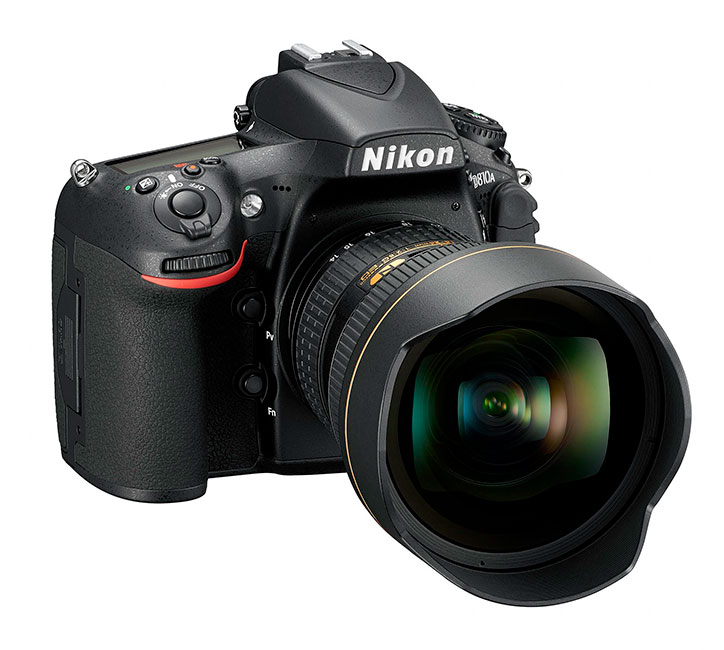
Some professional photographers no longer have 16 or 18 megapixel resolution. Someone wants more, in order to then print the image on a large-format banner with a five-storey house in height. That is why the Nikon D810a DSLR camera is in quite high demand. It has a 37-megapixel matrix with 42-bit color depth.
Due to the high resolution, the photographer will have to put up with fairly low ISO values. Also, the camera is not the best way for continuous shooting, since in this mode only 5 frames per second are created. As for the video, it is only possible in the resolution of HD or Full HD. Perhaps the main advantage of the camera is its relatively small size and weight.
Advantages:
- The battery sits down only after 1,200 shots;
- Dimensions do not go beyond the edge;
- Almost the maximum resolution of the matrix;
- There is moisture protection;
- High-speed data transfer via USB cable.
Disadvantages:
- Autofocus is not the best;
- Low shooting speed;
- I would like more photosensitivity.
Best Nikon Amateur DSLR Cameras
Nikon D610
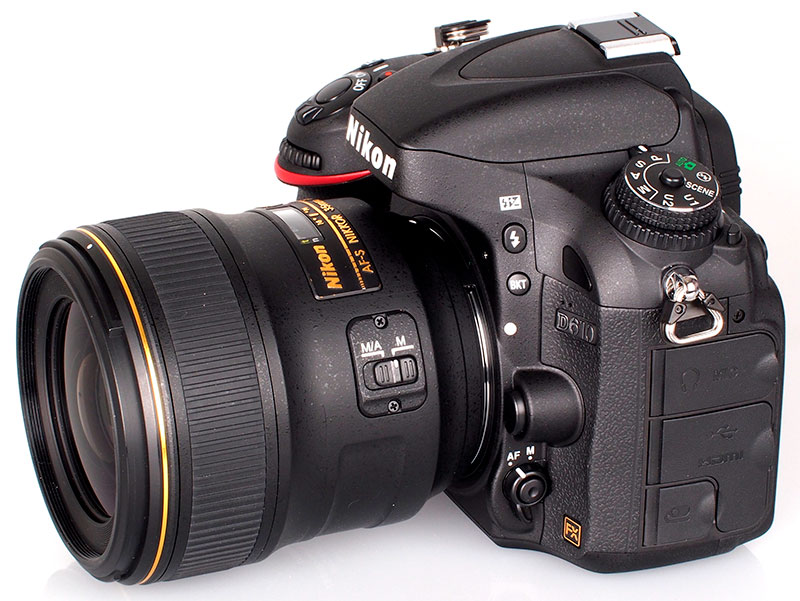
Of course, a fan of the cost of this device will seem terribly high. The resolution here is reduced to 24.7 MP - now it is the best option.
Framing is done using either a 3.15-inch LCD display or a mirror viewfinder with a 100 percent field of view. It should be noted and waterproof housing, allowing you to shoot in the tropics or in the rain.
The shooting speed here is 6 frames per second - this is quite good for an amateur DSLR. There are many other positive aspects of the camera, due to which even novice professionals use it.
Advantages:
- Good shooting speed;
- There is full moisture protection;
- Matrix with high resolution and 42-bit color;
- Literate interaction with flashes;
- It weighs relatively little (760 g without battery).
Disadvantages:
- Many lovers still can not afford;
- Limited video shooting;
- No wireless module.
Nikon D7200
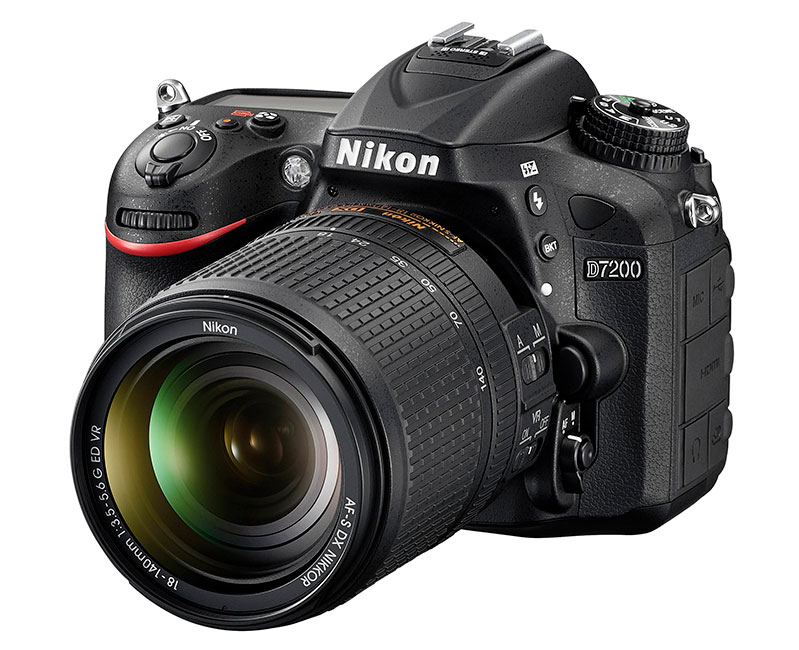
This device, even with the lens is not worth astronomical money. But it is about one and a half to two times more expensive than some kind of flagship smartphone. Fortunately, it also removes much better, since here there is an APS-C matrix, made using CMOS technology and having a resolution of 24.72 Mp. This SLR is widely used by video bloggers. They really like the fact that the picture is written at 60 frames per second even at Full HD resolution. At the same time, the device can be controlled from a distance by connecting to it via Wi-Fi. Another feature of the camera is the shooting speed, reaching 7 frames / s.
Advantages:
- Excellent serial shooting mode;
- The viewfinder has a 100 percent field of view;
- Optimal resolution of the matrix;
- Large LCD display;
- There is an auxiliary screen;
- There is a Wi-Fi module;
- High-quality video.
Disadvantages:
- Beginners will seem too expensive.
Nikon's best mirrorless camera
Nikon 1 V3

Unfortunately, the Japanese company did not manage to become number 1 on the mirrorless camera market. Its devices are somewhat simplified, which is not pleasant to experienced amateur photographers. Even the Nikon 1 V3 has one of the most expensive models. This device has an inch matrix, whereas approximately twice as large sensor is built into the SLR cameras. The resolution of the matrix is 18.4 megapixels.
The device is surprised by a very high shooting speed - the absence of a mirror plays its part here. Also a positive factor is the swivel touch display. The Japanese have not forgotten about Wi-Fi, which simplifies remote control and transfer of images to another device. The device copes well with video shooting.But the battery life here is low, you should immediately stock up on one or two additional batteries.
Advantages:
- Video shooting with high frequency and good stereo sound;
- Not the largest size;
- Wireless data transfer is possible;
- Convenient 3-inch touch screen;
- There is an electronic viewfinder;
- In serial mode it makes up to 60 frames per second.
Disadvantages:
- The battery lasts only 310 shots;
- To save data using a microSD memory card;
- Not a very big matrix.
Nikon's Best Compact Camera
Nikon Coolpix A
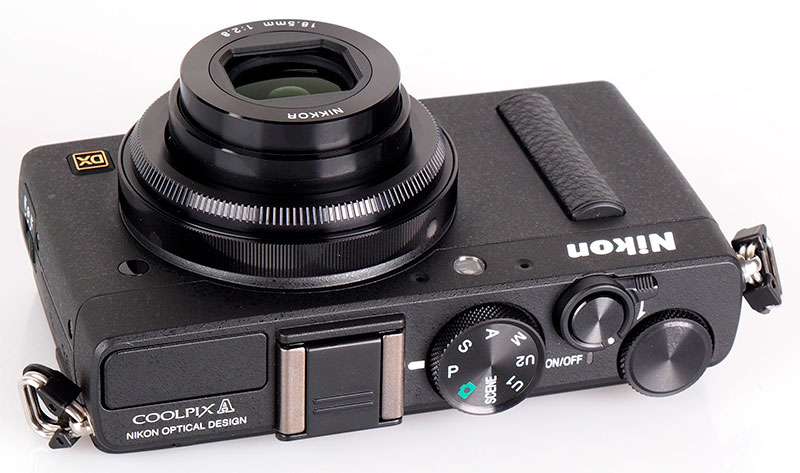
Typically, compact camera lenses have a variable focal length, giving the user optical zoom. But the Nikon Coolpix A is the exception to the rule. Its lens has a fixed 28mm focal length. This, firstly, reduced the size of the device. And secondly, it contributed to the installation inside the APS-C matrix.
Yes, in this baby there is the same matrix as in the much larger amateur mirrors! This is the main advantage of this camera. Unfortunately, the other characteristics of the device are not so encouraging. For example, the serial mode is not the fastest here, and the video is limited to 30 frames per second.
Advantages:
- A good 3-inch LCD;
- Built-in matrix with a crop factor of 1.5;
- Not low, but not the highest resolution;
- High-quality optics from seven elements in five groups;
- Supported modules (Wi-Fi and GPS).
Disadvantages:
- Writes video only with a frequency of 25 or 30 frames / s;
- Some people would like a stronger opening of the diaphragm;
- No optical zoom;
- One charge is only enough for 230 photos;
- By default, there is no Wi-Fi;
- Serial mode is limited to 4 frames per second.
Nikon's Best Secure Compact Camera
Nikon Coolpix AW130

Typical compact camera with waterproof case. The lens here is placed in one of the upper corners, it is located under the glass - in this regard, a wide range of focal lengths should not be expected. Unlike its predecessors, the device received a high-quality CMOS-matrix, the resolution of which is brought to 16 Mp.
Of course, its size (1 / 2.3 inches) makes itself felt, but an ordinary amateur photographer should be delighted with the pictures. It should please him and the serial mode, in which in about 0.8 seconds 5 frames are created. Interestingly, the device has built-in memory - the first time you can do without using an SD card. Also, the Wi-Fi module will not be superfluous.
Advantages:
- Nice appearance;
- There is the possibility of wireless transmission of information;
- Macro shooting is possible from a distance of 1 cm;
- There are 473 MB of internal memory;
- Good LCD display;
- The matrix was created by CMOS-technology;
- Protection against dust, moisture and low temperatures;
- The camera is endowed with geolocation (GPS).
Disadvantages:
- High price;
- Only 5x zoom;
- In serial mode, only 5 frames are created;
- The size of the matrix by modern standards is too small;
- The frequency of 60 frames only when HD-video.
Nikon's best ultrazoom
Nikon Coolpix B700
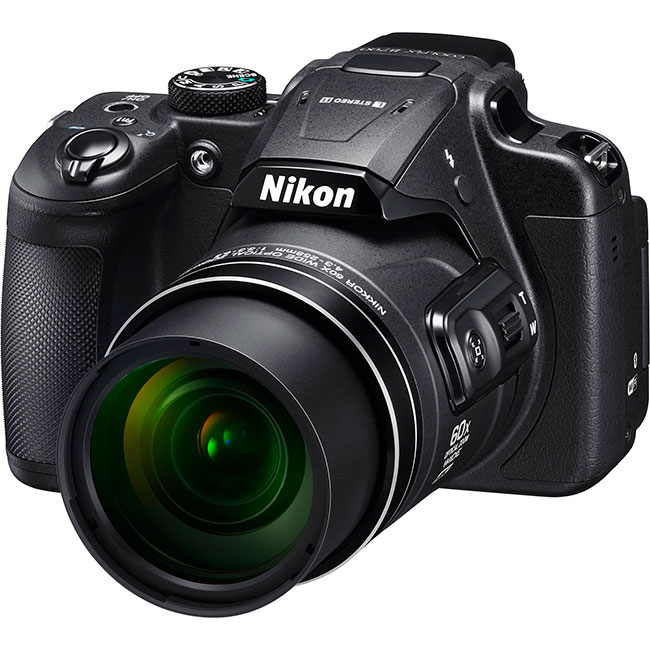
Formally, this camera is compact - at least, there is no way to replace the lens, as there is no mirror. But the size of the device exceeds many amateur DSLRs. This should not be surprising, because the optics installed here consists of twelve elements in nine groups! The maximum user is given a 60-fold zoom!
Of course, to achieve this result, the creators had to reduce the size of the matrix to 1 / 2.3 inches. Fortunately, the rest of its characteristics did not suffer - the sensor was made using BSI CMOS technology, and its resolution is 21.14 Mp.
Interestingly, the device even received an electronic viewfinder, which sometimes really helps. And here there are modules Wi-Fi and NFC, greatly simplifying the pairing with a smartphone or tablet.
Advantages:
- Huge zoom;
- There is an electronic viewfinder;
- The LCD display is rotatable;
- There is not only Wi-Fi, but also NFC;
- Available high-quality macro;
- There is a function of 4K video;
- High resolution CMOS-matrix.
Disadvantages:
- Low photosensitivity;
- The diaphragm does not open too wide;
- Many will not afford;
- There is no possibility to save photos in RAW format;
- Too large sizes.
What Nikon camera to buy
1. If you are a professional photographer, you need to purchase a Nikon D5 or Nikon D810a. The first model is about twice as expensive as the second. But on the other hand, it is capable of 4K video recording, it also offers higher values of photosensitivity. As for the second camera, it is slightly smaller, and its body is endowed with moisture protection. And it can also boast a higher resolution of the matrix up to 37.09 Mp.
2. If you are not a professional, but you have a lot of money, then take a look at the Nikon D610. This is a great machine that even some aspiring wedding photographers do not disdain. Of course, he has a number of restrictions, but you don’t remember them if you don’t see yourself as a professional photographer in the future.
3. Significantly lower cash costs will require a Nikon D7200. This is one of the most common SLR cameras in the world. He must arrange absolutely any novice amateur photographer. Separately, the fact that the creators have not forgotten about modern technologies, having introduced Wi-Fi support here, should please.
4. If you want to be able to change the optics, but the size of the DSLR scares you, then pay attention to the Nikon 1 V3. This is a compact mirrorless camera that shoots with an inch matrix. It is also suitable for video shooting, but slightly limited - autofocus does not work very quickly here. But the picture is written with a frequency of 50 or 60 frames / s!
5. Nikon Coolpix A makes great photos - better than any other compact from this Japanese company. But for this quality will have to pay the complete lack of optical zoom. The device has a number of other restrictions, mainly related to the speed of processing data from such a large matrix.
6. Produces a Japanese company and waterproof compacts. The best among them is the camera Nikon Coolpix AW130. It has a good matrix, also Wi-Fi and GPS modules are hidden under the case. The battery here is enough for about 370 shots, which can be considered the optimal parameter. The device could have become a hit if it were not for the inflated price tag.
7. Nikon Coolpix B700 differs from many other cameras with its chic optical zoom. The device is able to “zoom in” the picture 60 times! But for this opportunity will have to pay a relatively low sensitivity, bulky size and 565-gram weight.
It will be interesting to friends too










